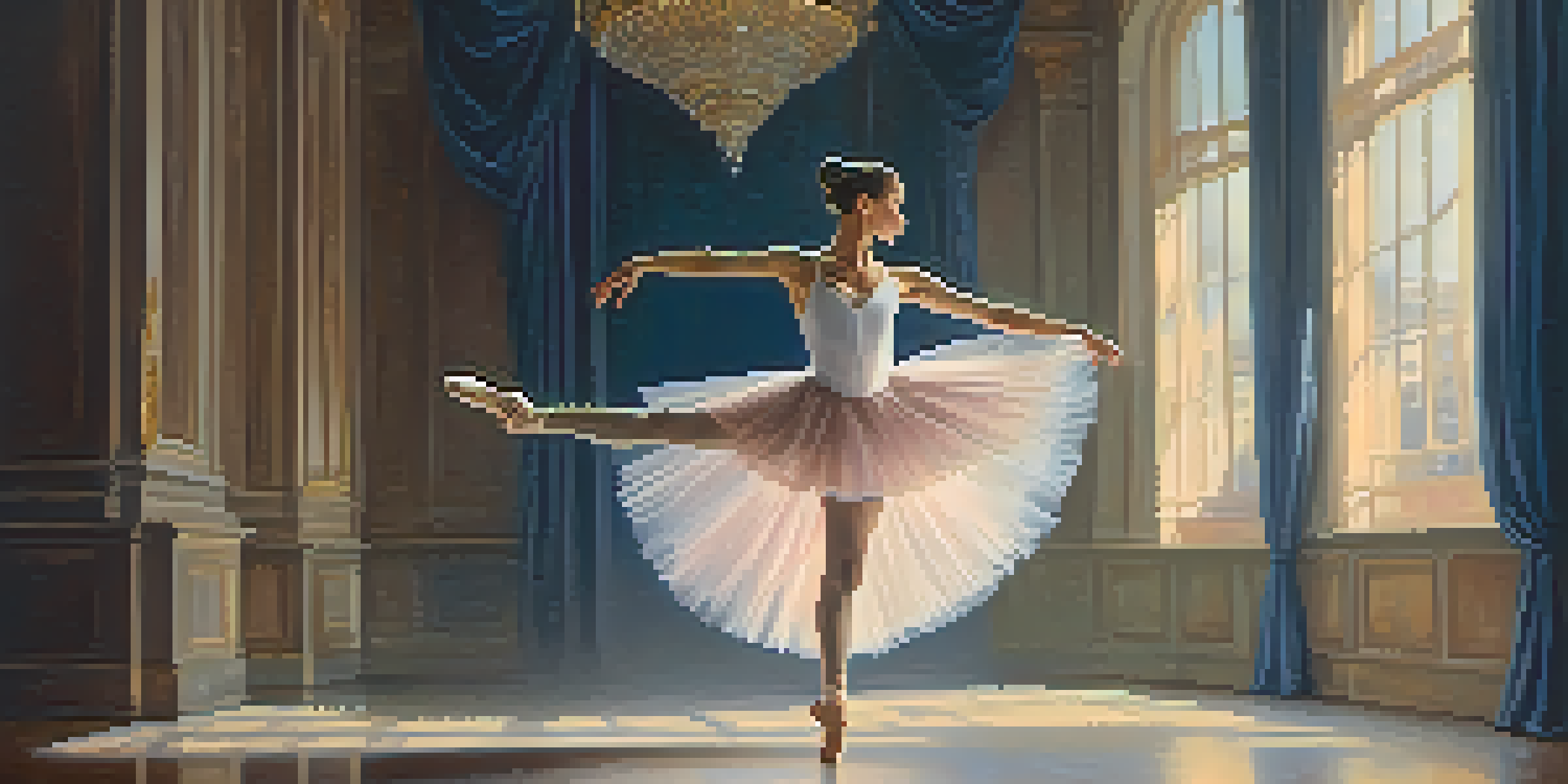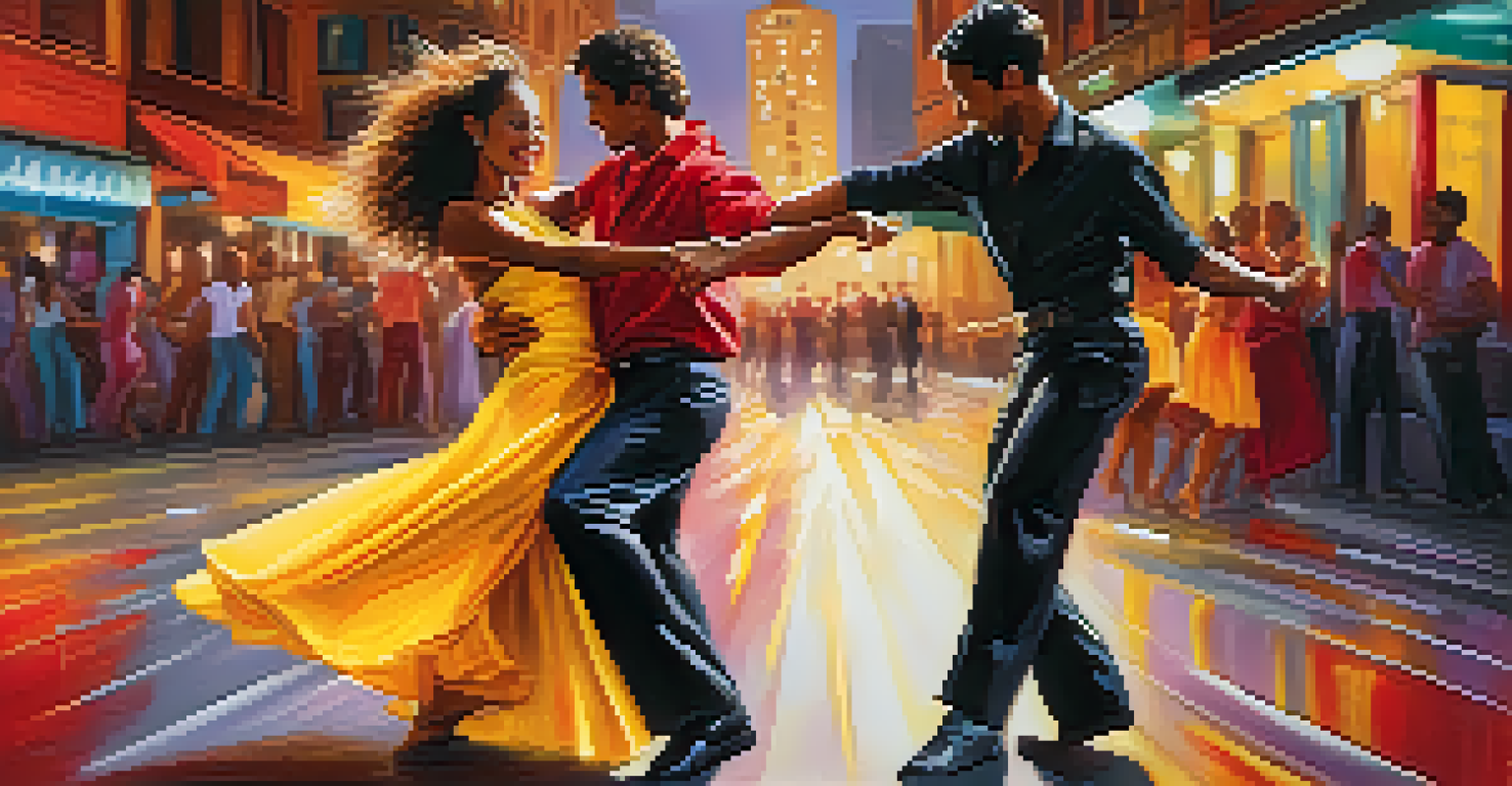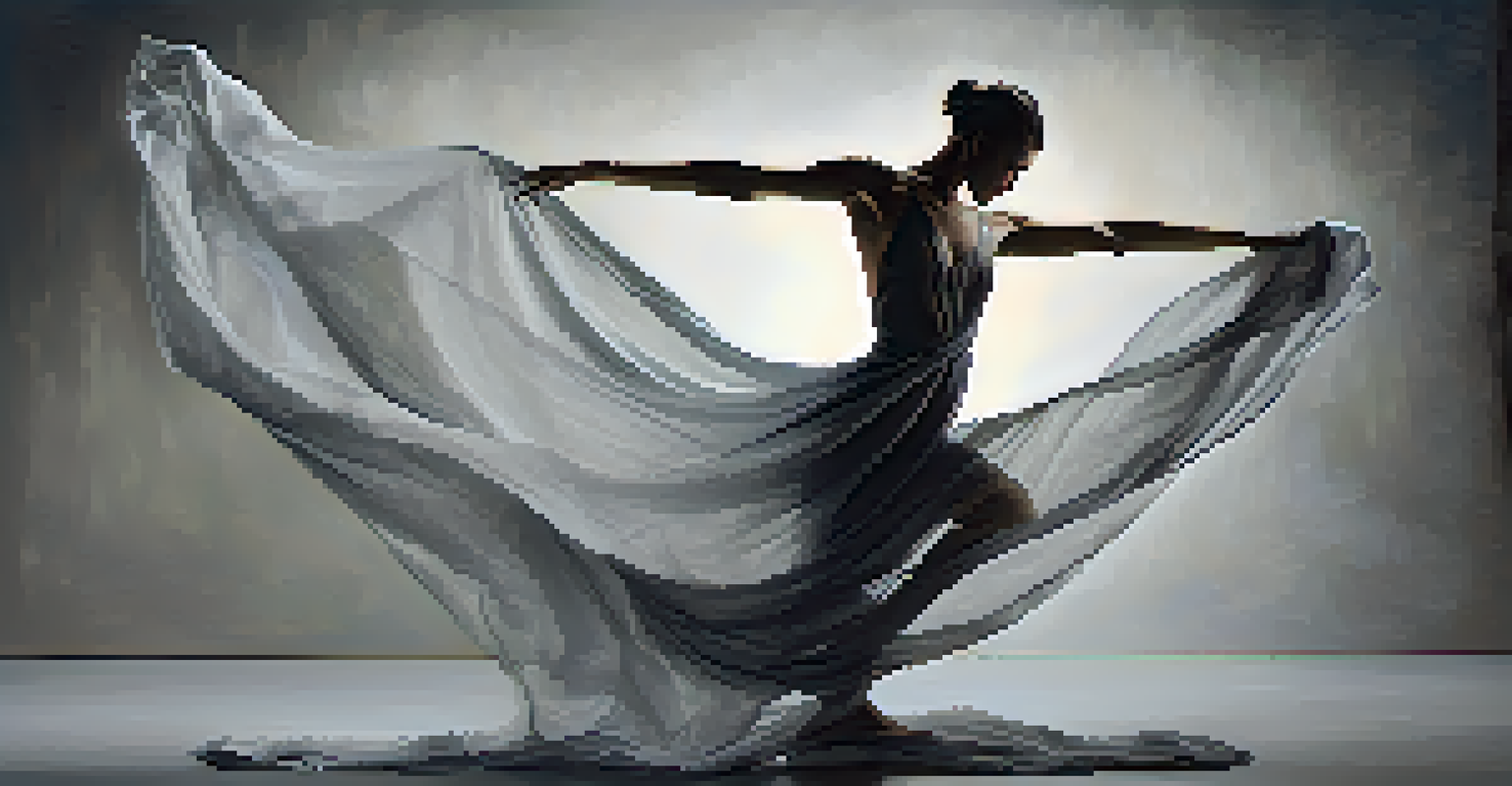Dance and Emotion: A Study of Non-Verbal Communication

The Unique Language of Dance and Emotion
Dance is often described as a universal language, transcending cultural boundaries. Through movement, dancers express complex emotions that words may fail to convey. Just as a painter uses colors to evoke feelings, a dancer uses their body to communicate joy, sorrow, and everything in between.
Dance is the hidden language of the soul.
For instance, a graceful ballet performance can evoke feelings of nostalgia or beauty, while a passionate salsa dance might ignite feelings of excitement and energy. The body becomes a canvas, and each movement tells a story that resonates on an emotional level.
Understanding this unique language of dance allows us to appreciate the depth of human expression. Whether in a theater or a street performance, the emotional connection created through dance can be profound, reminding us of our shared humanity.
Body Movements: The Core of Non-Verbal Communication
At the heart of dance lies the concept of non-verbal communication, where body movements convey meaning without uttering a single word. Each gesture, posture, and expression contributes to the overall emotional narrative. This is especially evident in styles like contemporary dance, where fluid movements can express vulnerability or strength.

Take a moment to consider how a simple twirl or a grounded stance can shift the mood of a performance. Just as a clenched fist may signal anger, a soft, open palm can convey peace or acceptance. These subtle cues allow dancers to connect with their audience deeply.
Dance as a Universal Language
Dance transcends cultural boundaries, allowing individuals to express complex emotions that words often cannot convey.
By analyzing these movements, we gain insight into the emotions being portrayed. The ability to read these non-verbal signals enhances our understanding of the performance and enriches our experience as viewers.
The Emotional Spectrum: Dance Types and Their Feelings
Different dance styles evoke different emotions, creating a rich tapestry of feelings. For example, hip-hop dance often expresses empowerment and resilience, while waltz can convey romance and grace. Each style has its unique way of tapping into the emotional spectrum, reflecting cultural and personal influences.
The body says what words cannot.
Consider the way a dramatic tango can illustrate longing or passion, with dancers moving in close embrace, each step laden with intensity. Conversely, a cheerful folk dance can uplift spirits, encouraging participation and joy among audiences.
Understanding the emotional context behind various dance forms enhances our appreciation for the art. It allows us to experience not just the technical skill involved but also the emotional journey that accompanies each performance.
Cultural Influences on Dance and Emotional Expression
Cultural backgrounds significantly shape how emotions are expressed through dance. Different cultures have unique dance traditions that reflect their values, beliefs, and historical experiences. For instance, African dance often incorporates communal participation, emphasizing unity and shared emotion.
In contrast, traditional Indian dance forms like Bharatanatyam use intricate hand gestures, or 'mudras,' to convey specific emotions and narratives. This cultural specificity adds layers of meaning to the dance, allowing performers to connect with audiences on a cultural level.
Non-Verbal Communication in Dance
Through body movements and gestures, dancers communicate emotions non-verbally, enhancing the audience's understanding and connection.
By exploring these cultural influences, we gain a deeper understanding of how dance serves as a mirror of society. It encourages us to appreciate the diverse ways in which emotions are expressed across the globe.
Psychological Aspects of Dance and Emotion
Dance is not just an art form; it also has psychological implications. Engaging in dance can be a therapeutic outlet for emotions, offering a way to process feelings that might be difficult to articulate. Many studies suggest that dance can reduce stress and anxiety, making it a powerful tool for emotional health.
Moreover, the act of expressing oneself through movement can foster a sense of empowerment and confidence. When individuals dance, they often tap into their emotions, allowing for a release that can lead to increased self-awareness and personal growth.
This psychological connection emphasizes the importance of dance beyond performance. It invites us to consider how dance can serve as a means of healing and emotional expression in our daily lives.
Interpreting Emotions: Audience and Performer Connection
The relationship between the performer and the audience is crucial in the realm of dance. Dancers often rely on the audience's reactions to gauge the emotional impact of their performance. This interaction creates a shared experience, where emotions are exchanged and amplified.
For example, a dancer performing a heart-wrenching solo may feel the audience's energy, which can enhance their own emotional expression. This connection can lead to a powerful, immersive experience for both parties, blurring the lines between performer and spectator.
Cultural Influences on Dance Emotion
Different cultures shape emotional expression in dance, reflecting unique values and historical experiences that enrich the art form.
Recognizing this dynamic helps us appreciate the deeper layers of dance performances. It reminds us that dance is not merely an individual expression but a communal experience that resonates with everyone involved.
The Future of Dance as a Medium of Emotion
As society evolves, so too does the art of dance as a medium of emotion. With advancements in technology, new forms of dance are emerging, blending traditional styles with digital innovation. Virtual performances and interactive dance experiences are changing how emotions are conveyed and perceived.
These innovations open up exciting possibilities for emotional expression, allowing for broader audiences to engage with dance. Imagine participating in a virtual dance workshop that connects you with dancers worldwide, sharing emotions and stories through movement.

Looking ahead, the future of dance holds the promise of even deeper emotional connections. As we embrace these changes, we must continue to celebrate the timeless bond between dance and the human experience.